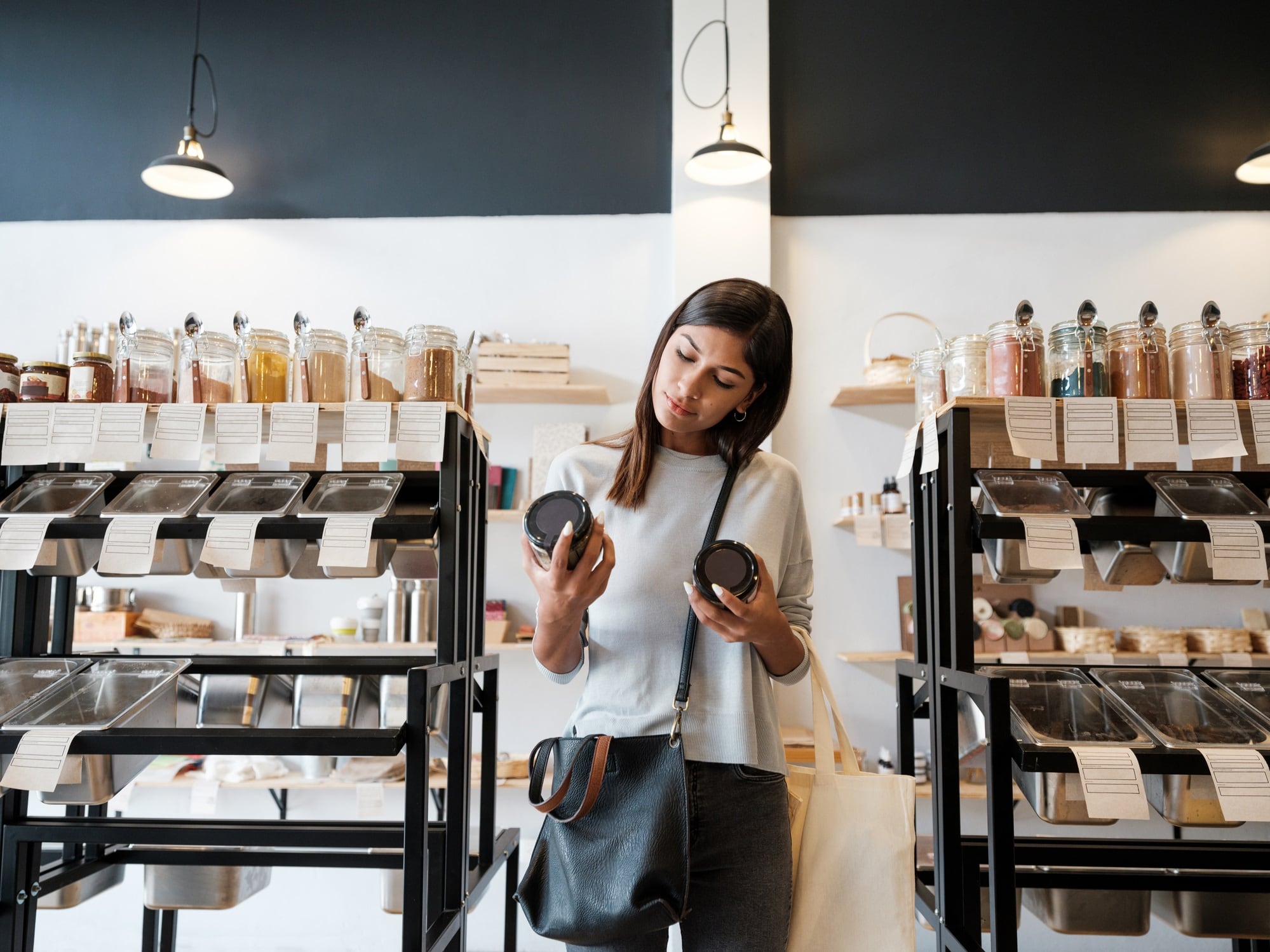There’s no doubt about it, the biggest reason brands are losing customers is cost.
“Thanks to the rising cost of living, brand promiscuity is at an all-time high, with more than 83% of consumers trying cheaper brands,” says Jeremy King CEO of consumer platform Attest.
And consumers are not just switching to cheaper products temporarily. A survey by Attest found that 71.7% of consumers had a lesser opinion of a brand following a price increase. This means they’re less likely to buy again in the future.
What’s more, consumers are getting savvier, with 60% saying they’re willing to shop around to get a bargain.
This means that, if consumers can find a product cheaper elsewhere they’ll buy it, regardless of whether it’s a named brand or not.
There has been a notable rise in the popularity of own brand products over independent brands
Katya Witham, Mintel
This has led to the rise of private-label products, which are now competing with named brands on quality and variety, while beating them on cost.
“There has been a notable rise in the popularity of own brand products over independent brands across Europe,” says Katya Witham, associate director for food and drink at Mintel.
And this sector is growing fast, with the private label segment accounting for up to 52% of supermarket sales in countries across Europe (Statista).
But even private-label products aren’t immune to consumer switching as, not only are consumers switching between brands, they’re also switching between supermarkets to get the best deal.
Almost two thirds (65%) of UK shoppers have switched some or all of their food shop to budget supermarkets Aldi and Lidl, a recent survey by in-store automation provider Pricer found.
So, what can brands do to win consumers back and hang onto them when they do?

How can brands build loyalty?
Brands are going to need to work to win customers back, and hold onto their existing customers. But this doesn’t mean they need to change or even drop their prices, they just need to prove their worth.
“With higher prices comes great responsibility,” says Pete Harbour, vice president of European Ice-Cream at Unilever. “More than ever, people need to be reminded of why our brands are worth the money.”
Actions speak louder than words so brands need to make sure they’re delivering on quality.
“One of the obvious ways of building brand loyalty is to deliver on everything you have promised and deliver that to the highest of standards,” says Gareth Roberts, chartered marketer for Orientation Marketing.
And brands need to be consistent with that quality.
“A brand needs to give customers a feeling of familiarity,” adds Roberts.
But it’s not just about the product itself. The overall look of the brand is important too.
“Look after your brand, and treat your logo, values, personality and tone as if it was your own reputation at stake,” says Roberts.
It’s also important to create a clear identity, which consumers will recognise when they’re in the supermarket.
“Building a strong brand with clear positioning gives a business the opportunity to weather any storm,” says Tom Rainsford, marketing director for Beavertown Brewery.
Consumers appreciate brands that are working hard to absorb costs instead of price gouging
Jeremy King, Attest
Brands also need to ensure they’re competitively priced. Not an easy feat when costs for manufacturers are rising on all fronts. But it’s definitely worth the effort.
“Consumers appreciate brands that are working hard to absorb costs instead of price gouging,” says Attest’s King.
Moreover, brands should actively encourage consumers to buy their products, through offers and incentive schemes.
“In today’s hyper-competitive market, brands that don’t incentivise purchase are highly likely to lose out to ones that do,” says King.
In terms of discount incentives, 57% of consumers want a percentage off, followed by 56% who want ‘buy one get one free’, and 39% of consumers looking for points or cashback.
There is also a generational divide to be considered, with Attest finding that Boomers (88.3%) and Millennials (88%) are the most open to switching between brands, while Gen Z are the least likely to switch (77.7%).
“This is an important distinction, highlighting that marketers shouldn’t lump consumers under 40 into one bucket and – possibly – that Gen Z loyalty can be nurtured and grown," says King.






